| Botanical Name |
|
| Family |
Anacardiaceae - The mango family. |
| Pronunciation |
loks-oh-STY-lis a-lay-tuh |
| Common Name(s) |
English: Tarwood; Tigerwood; Wild Pepper Tree
Afrikaans: Tierhout; Teerhout; Wildepeperboom
|
| Plant Group |
- Tree A woody, self-supporting perennial plant usually with a single main stem and generally growing more than 6 meters tall.
|
| Plant Size |
- Small to Medium
| Tree | 8m to 15m |
| Shrub | 75cm to 1m |
| Perennial/ground cover | 20cm to 40cm |
| Bulb | 30cm to 40cm |
| Succulent | 20cm to 40cm |
|
| Position |
- Canopy Shade Canopy shade is found below closely grown trees where some light filters through. Ideal for the protection of herbaceous plants.
- Partial Shade The area is in shade for part of the day and in full sun for part of the day.
- Sun The area is in full sun for all or most of the day, all year round.
|
| General Information |
- Drought Tolerance: High The plant is well adapted to arid conditions; it can survive long periods of drought and high temperatures without extra water.
- Evergreen Plants that have leaves all year round.
- Frost: Half-hardy The plant is able to survive low temperatures and some frost but requires protection against severe frost.
- Water Wise Plant species originating from low rainfall regions that require less water to survive and thrive than other plant species.
- Wind Tolerant Plants able to withstand the effect of strong winds.
|
| Specific Information |
I can only sing praise for this versatile but under-utilised tree. It has a lovely shape, is not too big, is evergreen, provides cool shade, has pretty flowers and does not mess. It can reportedly be grown as a large shrub and it makes an excellent windbreak. What more could one ask for?
|
| Ad Break |
|
| Flowers |
| Description |
Female flowers: small star shaped in clusters surrounded by a papery pink to reddish calyx
Male flowers: small, star shaped in clusters.
|
| Season |
- Spring to Summer Plants will seldom bloom for the entire season as given in the list, but should flower during a period within these parameters.
- Summer Plants will seldom bloom for the entire season as given in the list, but should flower during a period within these parameters.
|
| Colour |
|
| Growth Rate |
- Moderate to Fast Specifying growth rate can be very misleading as there is considerable variation of growth rate depending on type and species of plant, available water, supplementary feeding, mulching and general care, as well as the plants suitability and adaptability to the garden environment.
|
| Plant Uses |
- Accent or Focal Point A plant used to attract the attention because of its colour or form.
- Attracts bees, butterflies or other insects This plant attracts insects which can be food for birds or other creatures in your garden.
- Attracts Birds This plant will attract birds.
- Boundary A plant useful for planting around the edges of the property to form a green or colourful backdrop, an impenetrable hedge, to hide walls or create privacy.
- Provides deep shade A dense evergreen tree useful for a low light planting environment or for a recreational shade area.
- Suitable for bonsai A shrub or tree that lends itself to being dwarfed.
- Suitable for coastal gardens Plants adapted to dry, sandy soil, forceful wind, limited rainfall and intense sunlight.
- Suitable for smaller gardens Such plants do not have invasive root systems, remain small or controllable and can often be grown in containers.
- Wild Garden An indigenous garden planted for the benefit of wildlife and birds. Provides food, water, a variety of mini-biomes and no poisonous chemicals are used.
- Windbreak Trees planted in a row to form protection from prevailing winds by breaking the force of the wind, thereby reducing wind damage.
|
| Distribution and Habitat |
Eastern Cape and KwaZulu-Natal, along forest margins, beside rivers and on outcrops of quartz and sandstone
|
| Planting Suggestions |
|
| Medicinal Uses |
The bark and leaves are reportedly used in traditional medicine, particularly at childbirth.
|
| Ad Break |
|


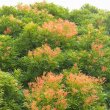
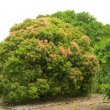
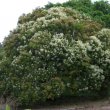
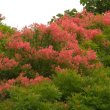
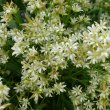
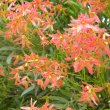
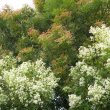
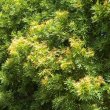
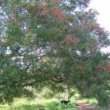
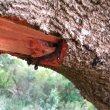
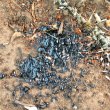


Comments
is it appropriate to plant
is it appropriate to plant this tree in a group of,say, 3 specimans +- one metre apart?
Spacing of Loxostylis alata
Hi Kerry
You have not indicated where you are so it is difficult to give you a specific assessment.
In my opinion, this would not be a good idea unless you have a very large space in mind. Over time each specimen will grow from 4 to 6 meters across, so you could end up with a clump of trees up to 10 or 12 meters in diameter, with severely distorted inner branches and a great deal of dead wood.
In less than ideal conditions this tree has been reported as being a shrub, but I have never seen this myself. If you live in an area where these trees would remain smaller, i.e. very dry and hot, they may not grow quite so large (about 4m high with a spread of perhaps 3m) but I would still suggest a spacing of at least 2 m apart.
Kind regards
Lorraine
Consideration of planting loxostylis alata
Hi Lorraine,
We are staying in Pretoria (close to the University of Pretoria) in Brooklyn.
We are looking for a evergreen tree to plant close to a wall and swimming pool. Some other considerations as well would be:
1 Height Preferably not more than 6 metres
2 A tree without an aggressive root system
3 I would like to plant Clivias underneath the tree
4 Not a messy tree please!
5 Something for the eye. Focus point
I would like to know if a loxostylis alata would be suitable as a possible choice? Any other suggestions will really be welcome.
Regards
Ronel Beetge
Trees with non-invasive root systems for the Highveld
Hi Ronel
This is one of my favourite trees but I doubt its adaptability for Highveld conditions.
Random Harvest Indigenous Nursery, in Muldersdrift near Johannesburg, has an excellent article with pertinent advice and considerations, accompanied by a list of trees for pools, tried and trusted for the Highveld area - with pictures. Go to: http://www.randomharvestnursery.co.za/RandomHarvestNews/IndigenousGarden...
I am sure you will find something suitable.
Kind regards
Lorraine
LOXOSTYLIS ALATA in Betty's Bay WC
Hi Lorraine,
I would like to know whether Loxostylis Alata would survive in Betty's Bay in the Western Cape. This is fynbos area, but I would like a small tree as well - I currently have Virgilia (Keurboom), Curtisia dentata (Assegai tree) and Rapanea melanophloeos (Boekenhout). I am the second street back from the sea.
Can you advise who could supply this tree in the Cape, if it is feasible?
Loxostylis alata availability
Hi Jacqui
My sincere apologies for not having replied to your comment.
Unfortunately I have not come across this tree in any of the nurseries I have visited, which I find puzzling as it is such a lovely tree. I grew mine from seed which (I think) I bought from silverhillseeds.co.za
As to feasibility, I can't really make any comment - sometimes plants just surprise us by adapting to conditions that may be very different to their natural habitat. My concern would be the effect of salty winds.
Kind regards
Lorraine
Discuss this plant
Share knowledge, ask a question or give an experience.